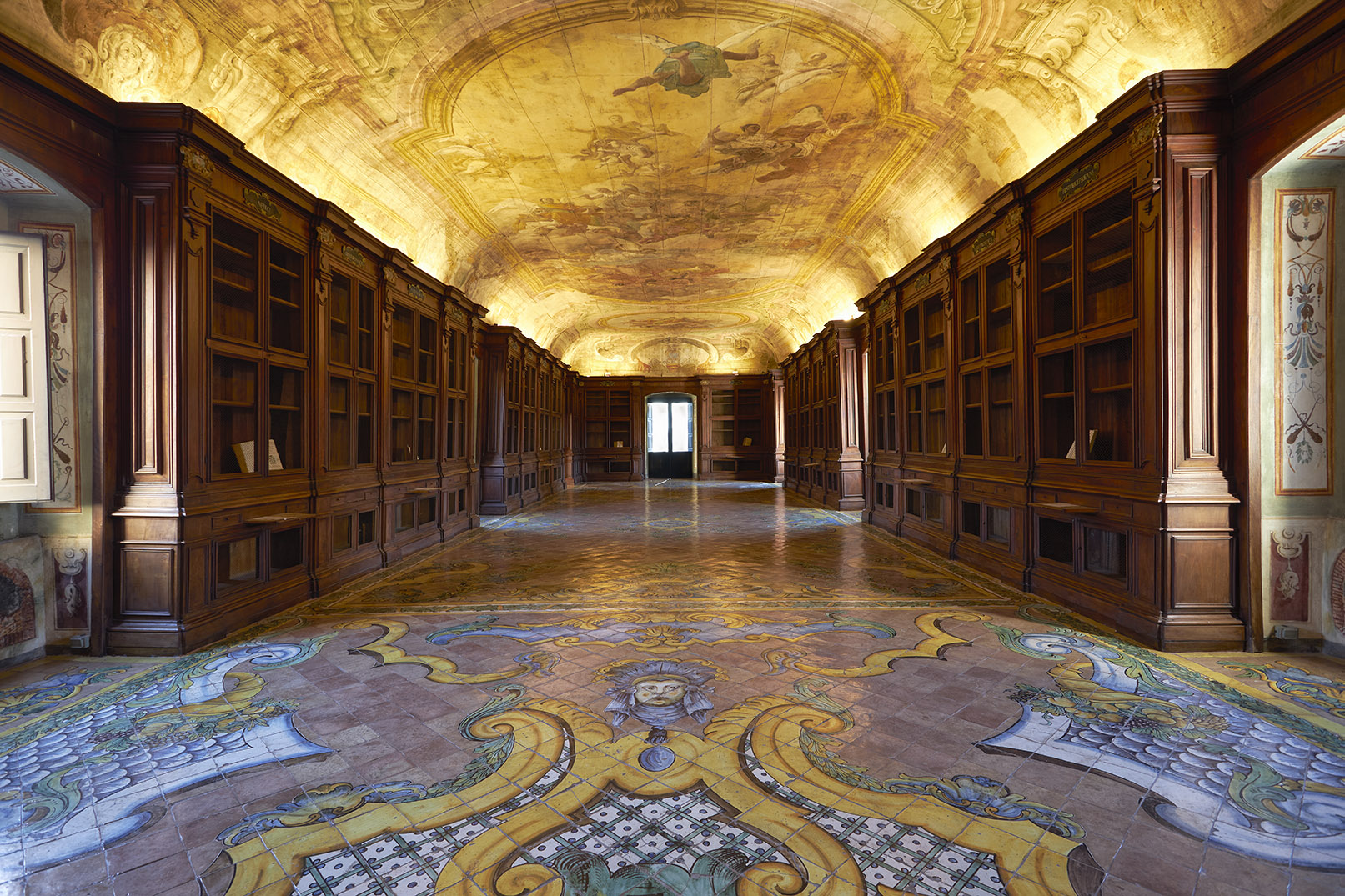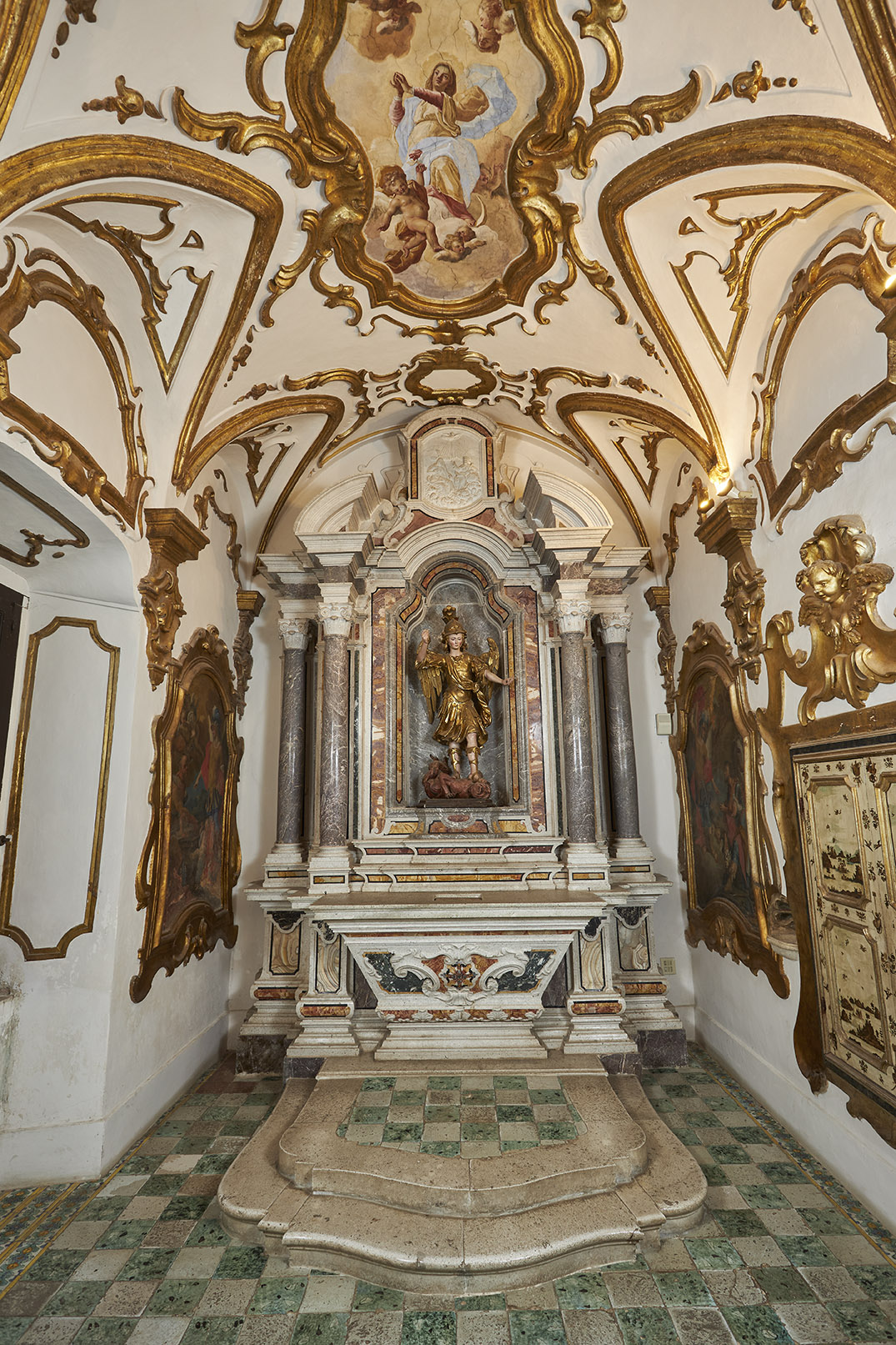The most vast and sumptuous Certosa in Italy
Extraordinary emblem of Baroque architectural magnificence, the Certosa di San Lorenzo (San Lorenzo Charterhouse) is the first monastic complex founded in Campania by the Carthusian Order, as well as one of the largest monastic complexes in Europe.
History of the monastic complex
The construction of the Certosa di San Lorenzo began in 1306, by the will of Tommaso Sanseverino, Count of Marsico. The Monastery, located on the plateau dominated by the ancient centre of Padula, is one of the largest in Europe : the total area exceeds 50,000 square metres, of which over 30,000 are covered.
The Certosa was founded for diplomatic reasons and for practical purposes. Padula's territory, in fact, needed vast land reclamation works of the marshes following the floods of the Tanagro river. The Carthusian Order had the knowledge and skills to carry out this activity. The monastic complex became increasingly important over the centuries, until the Napoleonic rule, when the monastic orders were suppressed.
During this period, the Certosa (Charterhouse) was plundered and stripped bare of most of its treasures, with the final destruction in 1866. The site, declared a National Monument in 1882, was abandoned for decades and used as a prison, barracks, school and even a concentration camp during the two world wars.
Since 1982, la Soprintendenza per i Beni Architettonici di Salerno (Salerno's Superintendency of Architectural Heritage) has undertaken the long and arduous task of restoring and refurbishing the spaces, returning the ancient structure to its original appearance.
Designated as a Unesco World Heritage Site in 1998, the San Lorenzo Charterhouse was classified as a museum in 2014 and is part of the Polo Museale della Campania (Museums of Campania).
Heritage
The Charterhouse's collection includes ceramic and stone pieces, canvases, paintings, wooden furniture, an important collection of contemporary art and about 2,000 volumes from various periods, which make up the surviving part of the Charterhouse Fathers' extensive library.
Every year, in the days leading up to the Night of San Lorenzo, the Charterhouse also becomes the scene of a very special historical commemoration of the stopover in Padula by the Emperor Carlo V and his army, who had just returned from the Battle of Tunis. According to tradition, on 10 August 1535, Charterhouse monks prepared a gigantic omelette of a thousand eggs in honour of the king and his soldiers. In admiration of the cooks' skill and flattered by the hospitality they received, the Emperor repaid the kindness of the monastic community of Padula by bestowing on them further privileges.
Today, the historical reconstruction, organised by the Pro Loco di Padula, involves making the famous omelette in the courtyard outside the Charterhouse Monastery. The omelette is cooked with thousands of eggs in a giant steel pan, which is lifted and turned by an ingenious mechanical device with counterbalances and tie bars.
Amidst the music, dancing and traditional costumes, the majestic Guinness World Record omelette is then served to the many onlookers who participate in the festivities, applauding the skill of the cooks, just like Carlo V hundreds of years before.

